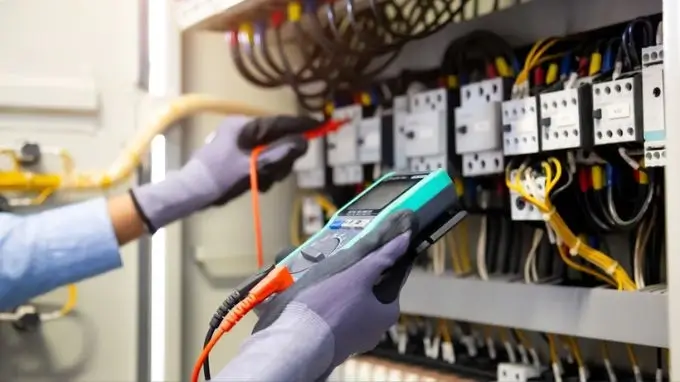Streamline processes with innovative mechanical system optimisation support.
Wiki Article
Leading Tips for Effective Electrical System Troubleshooting
Repairing electric systems requires a systematic method, based in an extensive understanding of electrical principles and security protocols. By acquainting oneself with circuit components, using crucial devices, and adhering to an organized examination approach, specialists can efficiently determine and settle problems. Nonetheless, the subtleties of effective repairing extend beyond simple technological understanding; recognizing just how to document findings and focus on safety and security can considerably affect end results. As we check out these crucial components even more, it becomes clear that grasping this procedure is not simply beneficial but crucial for success in the field.Understand the Essentials
Understanding the essentials of electrical systems is crucial for effective troubleshooting, as a solid foundation permits service technicians to detect and solve concerns extra effectively. A comprehensive understanding of electrical principles, such as voltage, existing, resistance, and power, is essential in recognizing the source of troubles. Voltage is the electrical prospective distinction that drives present via a circuit, while resistance opposes the flow of present, impacting the total performance of the system.Familiarity with circuit components, including resistors, capacitors, diodes, and switches over, is also paramount. Each component plays a distinct function in circuit habits and can affect performance when malfunctioning. In addition, comprehending collection and parallel circuit configurations is crucial, as these arrangements influence the circulation of voltage and present within the system.
In addition, expertise of safety methods is crucial. Professionals have to be mindful of potential threats, such as shock and brief circuits, to execute risk-free troubleshooting methods. By mastering these fundamental concepts, specialists enhance their capacity to perform effective diagnostics and repair services, inevitably leading to improved efficiency and integrity of electric systems. This foundational knowledge is the cornerstone of successful repairing ventures.
Gather Necessary Tools
Efficient troubleshooting of electrical systems calls for the ideal collection of tools to identify and deal with problems precisely. A fully equipped professional can dramatically boost efficiency and efficiency in determining issues. Essential tools consist of a multimeter, which determines voltage, existing, and resistance, permitting precise evaluations of electrical components. Secure meters are additionally beneficial for measuring current without detaching the circuit, making certain safety and comfort.Furthermore, shielded hand devices such as screwdrivers, pliers, and cable pole dancers are critical for securely adjusting electric links. It is also a good idea to have a circuit tester handy to verify the presence of voltage in outlets and cables. For more facility systems, a thermal imaging camera can help spot overheating elements, suggesting prospective failings.

Adhere To a Systematic Approach
Having actually collected the suitable tools, the following action in repairing electrical systems is to comply with a methodical method. A methodical strategy guarantees that service technicians can determine mistakes efficiently and accurately, reducing downtime and avoiding unnecessary repair services.Begin by reviewing the system's schematic layouts and specs. Comprehending the layout and functional specifications will provide context for detecting issues. Next off, isolate the issue location by using a procedure of elimination. This entails checking each component methodically, beginning with the power resource and functioning towards the lots.
Use testing tools, such as multimeters and oscilloscopes, to gather objective information concerning voltage, current, and resistance at numerous points within the system. This empirical proof will certainly guide your troubleshooting initiatives and aid to validate or get rid of potential causes of failure.
Additionally, consider environmental factors that may influence the system's efficiency, such as temperature level variations or moisture access. A detailed evaluation of wiring, links, and parts will guarantee that all possibilities are made up.
File Your Searchings For
Detailed documentation is essential in the troubleshooting process of electrical systems. Accurate records boost the performance of identifying recurring issues and help with interaction among group participants. Each searching for needs to be diligently noted, including symptoms observed, tests conducted, and the outcomes of those tests. electrical system troubleshooting. This technique not just help in comprehending the origin of the trouble but likewise functions as a referral for future repairing initiatives.
Additionally, preserving a log of components changed or repair work executed is important. This info sustains supply monitoring and can help evaluate the long life and reliability of specific parts.
Eventually, the paperwork procedure ought to be thorough yet succinct, enabling easy try this website retrieval and review - electrical system troubleshooting. By prioritizing comprehensive documentation, service technicians can create a useful data base that not only aids this contact form in present troubleshooting yet likewise encourages future maintenance efforts, consequently enhancing overall system reliability

Prioritize Safety Measures
Identifying the inherent threats connected with electric systems is important for guaranteeing safety throughout troubleshooting. Electric shock, burns, and tools damages are just a few of the potential threats that technicians deal with. Focusing on security actions is not only a legal responsibility but also an ethical critical that safeguards both the service technician and the surrounding atmosphere.Prior to commencing any kind of troubleshooting job, technicians ought to wear ideal personal protective tools (PPE), including insulated gloves, shatterproof glass, and flame-resistant apparel. Making sure that the workplace is dry and cost-free of mess can substantially minimize the risk of crashes. Moreover, it is vital to de-energize circuits before beginning any job, verifying that they are not live through the usage of a multimeter or voltage tester.
Establishing clear communication methods with staff member is likewise crucial; this ensures that everybody understands potential dangers and the status of the electric system being dealt with. Finally, having an emergency situation action plan in position can confirm indispensable in case of a case. By focusing on safety and security actions, professionals can effectively minimize dangers and visit homepage foster a more secure office.
Verdict
Effective electric system repairing relies on a detailed understanding of fundamental principles and a methodical strategy. Prioritizing safety procedures ensures the well-being of individuals included and the honesty of the electrical system.Report this wiki page